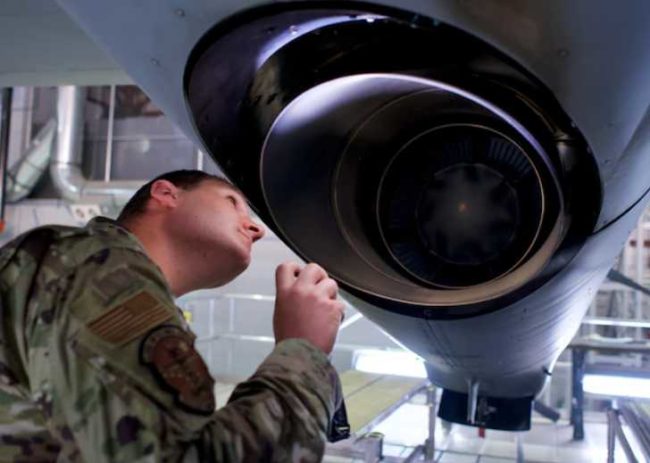
JOINT BASE ELMENDORF-RICHARDSON, Alaska — A 211th Rescue Squadron HC-130J Combat King isn’t your everyday C-130.
Configured for combat search and rescue (CSAR), the King is packed with sensors designed to search for isolated service members, and it has four wing-mounted tanks that can pass JP-8 aviation fuel to CSAR HH-60G Pave Hawk helicopters while airborne.
Responsible for maintaining 211th RQS HC-130s and working hand in hand with specialized maintenance Airmen of 176th Maintenance Group are crew chiefs of 176th Aircraft Maintenance Squadron (176th AMXS).
To take someone off the street and ready them to inspect, diagnose and repair an aircraft as complex as the HC-130 takes months of technical school followed by on-the-job training with the unit, called Mission-Essential Skills Training.
“MEST is also known as home-seasoning training,” said Senior Master Sgt. Robert Holmes, 176th AMXS HC-130 flightline supervisor. “It’s what we use to get the new recruits just out of tech school familiarized with our airframe and to get trained in their core tasks to get them to 5-level, qualified to deploy.”
Recently completing MEST is Airman 1st Class Brad Payton, 176th AMXS HC-130J crew chief. Payton said after Basic Military Training, his maintenance education started with initial-skills training at Sheppard Air Force Base, Texas.
Holmes said Airmen learn basic maintenance fundamentals as Sheppard.
“You may have people who scored high enough on their [Armed Services Vocational Aptitude Battery test] to qualify for the maintenance career field, but they might not have any experience using a screwdriver or a wrench,” Holmes explained. “Some of these Airmen who have worked on their own cars when they came into the military wouldn’t need the basic fundamentals, but it has to be taught because you need to get everyone to the same basic level.”
After Sheppard, Payton reported to Little Rock Air Force Base, Arkansas, to get hands-on training with the J-model aircraft after familiarization with older H-model airframes.
As specialized as Payton’s Little Rock training was, Holmes said the new Airman still needed training specific to Arctic operating conditions and supporting 211th RQS mission of around-the-clock search and rescue alert for Alaska.
“We have a lot of different procedures because of our long winters and our 24/7 alert commitments,” Holmes said. “So, they weren’t taught de-icing down there, whereas up here it’s essential to know.”
Payton said, though he acknowledges he has a lot to learn about HC-130 maintenance, he feels more comfortable with the work than when he reported to the unit. He said it would have been impossible to gain the needed experience during drills alone.
“Just coming in on the weekends, it would be a lot harder to remember all of this stuff coming in just once a month,” he said.
With his new skills, Payton, who works for an aviation logistics company in his civilian job, said his training opens up new opportunities.
“I reached the end of where I can go in the civilian world, so I joined the Guard to get my [airframe and powerplant] license,” he said. “Instead of going to college for four years to get it and paying them to do it, I can come here, work, and get paid to do it, then take a test and get the certification.”
Though ultimately angling for a job in the civilian aviation community, Payton said he would jump at the chance to work full time in the Alaska Air National Guard. Between joining the Guard and training in the real world, Payton’s future is set on the wings of an Alaska Air National Guard HC-130.
###
